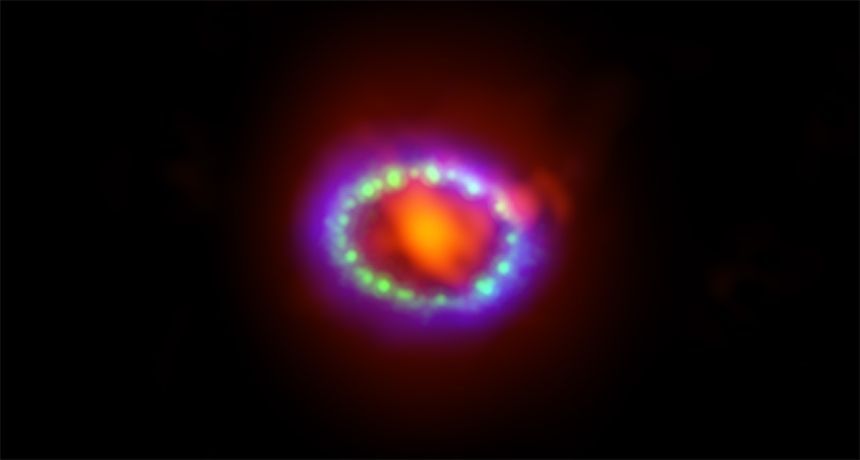Questions for ‘After 30 years, this supernova is still sharing secrets’

This image of supernova 1987A combines data from the Hubble Space Telescope and the Chandra X-ray Observatory.
ALMA (ESO/NAOJ/NRAO)/A. Angelich. Visible light image: the NASA/ESA Hubble Space Telescope. X-Ray image: The NASA Chandra X-Ray Observatory